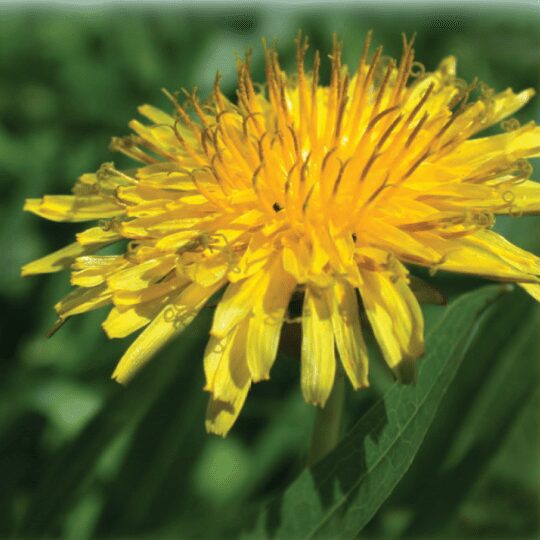The dandelion—a quaint, yellow-flowered, perennial herb loathed by homeowners and gardeners—was once praised for its many useful properties: its roots for medicinal remedies; its flowers for wine; its bitter, earthy leaves for cooking. Similar to chicory, the dandelion’s stalk stands tall with its sweet-smelling flower head, which turns into a downy ball of seeds to be carried off with the wind. Its roots have a milky, bitter juice.
Its name comes from the Latin Dens Leonis; the French translation of which is dent de lion, meaning lion’s teeth, perhaps describing the plant’s tooth-like leaves. The English changed this phrase to dandelion. A folk name is piss en lit (“piss in the night”) or in English sometimes “piss-a-bed” or similar because dandelion tonics have strong diuretic properties.
A rough engraving of a Dandelion plant.
Dandelion in A new and complete American medical family herbal, 1814
National Library of Medicine #2556052R
Native to Asia and Europe, the dandelion has been recorded in ancient writings, and Arabian physicians used the plant in medicine in the tenth and eleventh centuries. For centuries, the Chinese and Indians have grown the dandelion to treat liver diseases and digestive problems. The dandelion arrived in the Americas at the time of the Mayflower.
Bees and other pollinating insects love dandelions. The flower heads consist of tube-like florets, each containing nectar and pollen. Although seen as a weed, it can make a good companion plant in the home garden. Its deep roots pull up nutrients for plants with shallow roots, and add nitrogen and minerals to soil.


